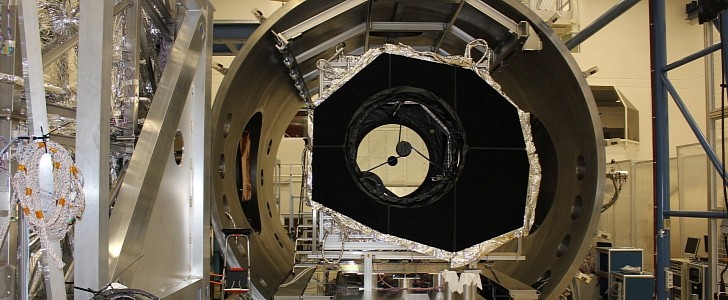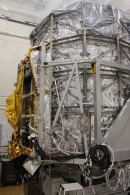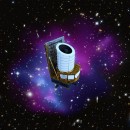Dark matter and dark energy fascinate many of us, as one of the most mysterious astronomical concepts. No telescope can actually see them, but the European Space Agency (ESA) is preparing to launch one that will be able to study them more in-depth and give us a better understanding of how the universe grew and keeps growing.
ESA kicked off the Euclid satellite project last year, with the goal of learning more about the growth rate of cosmic structures, such as galaxy superclusters, which are influenced by dark energy and dark matter. Euclid will study their presence and role indirectly, by measuring the distribution of galaxies – as the universe grows, far-away galaxies become even more distant from us.
In order to do that, ESA’s telescope will be sent almost 1 million miles away (1.5 million km), to orbit the second Sun-Earth Lagrangian Point (L2). Here, Euclid will use its Visible Imager (VIS) and Near Infrared Spectrometer and Photometer (NISP) instruments, to measure billions of galaxies, with what ESA calls “unprecedented accuracy”.
Until traveling almost 1 million miles into space, Euclid has a long journey ahead here, on Earth. At the end of 2020, Airbus Defense and Space integrated the imaging instruments onto Euclid’s payload module, in Toulouse, France. Earlier this year, the module was brought to the Centre Spatiale de Liege (CSL), in Belgium.
This is where the future telescope underwent some extreme tests, in order to make sure that it can function properly in the space environment. For 60 days, the payload module (which was sealed in a vacuum tank) was tested in simulated extreme space conditions, such as a -150-degree Celsius (-238 degrees Fahrenheit) temperature.
Its optical performance was also put to the test, by using another telescope (a special collimator) to project “fake stars” into the Euclid telescope. Its “vision” must be in top shape because it’s supposed to observe and measure faint galaxies. The team also identified a software issue, which was fixed in due time, thanks to these types of tests.
Next, Euclid’s payload module will travel to Torino, Italy, where Thales Alenia Space is located. This is where the final spacecraft will be born, by integrating the service module.
The Euclid telescope is set to be launched by the end of 2022, from the European Spaceport in French Guiana.
In order to do that, ESA’s telescope will be sent almost 1 million miles away (1.5 million km), to orbit the second Sun-Earth Lagrangian Point (L2). Here, Euclid will use its Visible Imager (VIS) and Near Infrared Spectrometer and Photometer (NISP) instruments, to measure billions of galaxies, with what ESA calls “unprecedented accuracy”.
Until traveling almost 1 million miles into space, Euclid has a long journey ahead here, on Earth. At the end of 2020, Airbus Defense and Space integrated the imaging instruments onto Euclid’s payload module, in Toulouse, France. Earlier this year, the module was brought to the Centre Spatiale de Liege (CSL), in Belgium.
This is where the future telescope underwent some extreme tests, in order to make sure that it can function properly in the space environment. For 60 days, the payload module (which was sealed in a vacuum tank) was tested in simulated extreme space conditions, such as a -150-degree Celsius (-238 degrees Fahrenheit) temperature.
Its optical performance was also put to the test, by using another telescope (a special collimator) to project “fake stars” into the Euclid telescope. Its “vision” must be in top shape because it’s supposed to observe and measure faint galaxies. The team also identified a software issue, which was fixed in due time, thanks to these types of tests.
Next, Euclid’s payload module will travel to Torino, Italy, where Thales Alenia Space is located. This is where the final spacecraft will be born, by integrating the service module.
The Euclid telescope is set to be launched by the end of 2022, from the European Spaceport in French Guiana.









